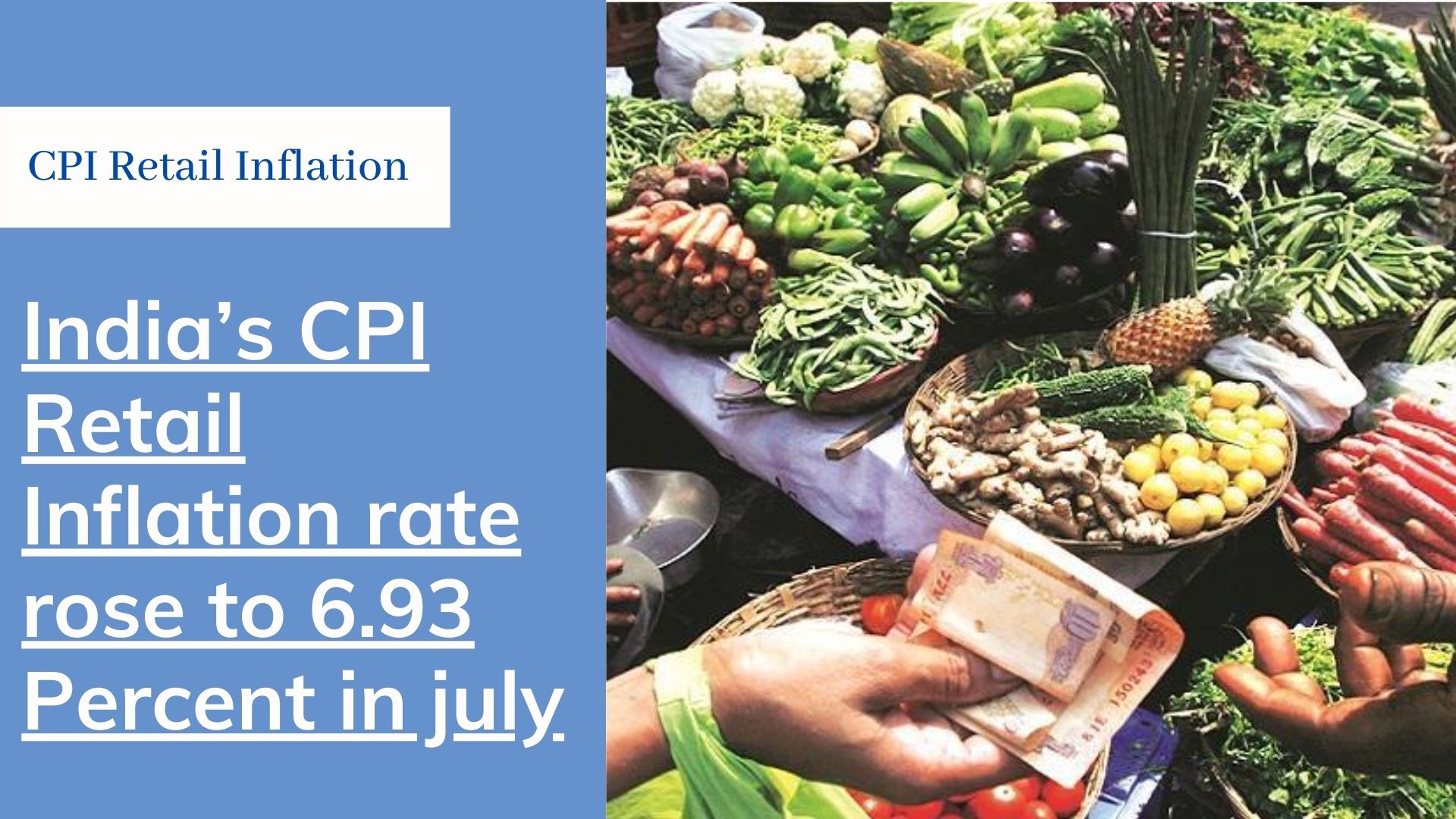According to the Government data released by the Ministry of statistics and programme implementation (MoSPI) the Consumer Price Index (CPI) that is a measure of retail inflation in India rose to 6.93 per cent in July. This hike was observed mainly due to an increase in food prices.
The data also revealed that the Consumer Price Index for June also spiked to 6.23 per cent from 6.09 per cent.
Before the CPI data of June, the government did not release any data regarding the retail inflation in April and May. However, the government changed the data for March from 5.91 per cent to 5.84 per cent.
The government has instructed the central banks of India to keep the inflation rate within the range of 4 per cent with a margin of 2 per cent on either side, i.e. from -6 per cent to +6 per cent. The retail inflation in India has grown beyond the upper margin of 6 per cent as directed by the Reserve Bank of India.
Talking about the recent events just last week, the central bank kept its key interest rates on hold to revive the COVID stricken Indian economy despite its vow to keep policy sufficiently loose.
As the hike in the inflation rate is mainly because of the food prices, let us have a peek on them. When we talk about the Consumer Food Price Index (CFPI) or in simple terms the inflation in the food basket, the rate increased to 9.62 per cent in July. The CFPI for June too was revised to 8.72 per cent from 7.87 per cent.
The growth in retail inflation rate was mainly due to the rise in food prices. Let us have a quick review of the items whose increment in prices had a massive effect on inflation.
- In July the pulses and product prices showed a massive 15.92 per cent on-year increment which was one of the main reason for the hike in inflation
- The prices of meat and fish rose to 18.81 per cent
- The prices of Oils and fats rose to 12.41 per cent
- The prices of spices rose to 13.27 per cent
- The prices of vegetables rose to 11.29 per cent
Reacting to the sequence of events Rahul Gupta head of research currency at Emkay Global Financial Services said that despite the national lockdown are at ease, the food inflation would remain a cause of concern as the regional lockdown is still in an active state. With relaxations in lockdown over every region and better monsoon, we can expect the inflation rate to come under RBI’s mandated range. But until the Consumer Price index is above 6 per cent, RBI will remain hesitant on cutting repo rate.
Repo rate is used by monetary authorities to control inflation and is the rate at which the central banks of a country, Reserve Bank of India, in case of India, lends money to commercial; banks in case of shortfall of funds. Repo Rate.









